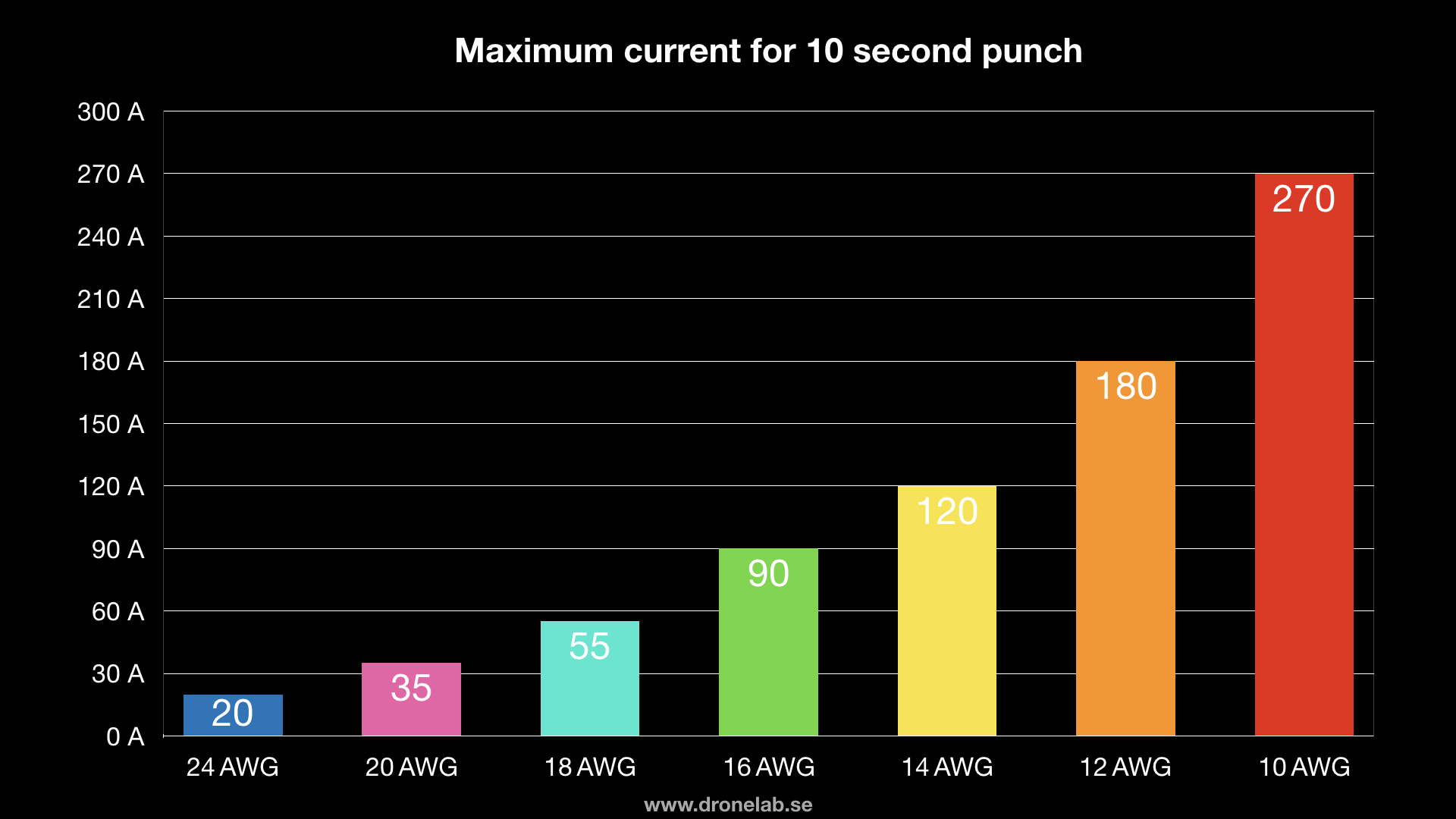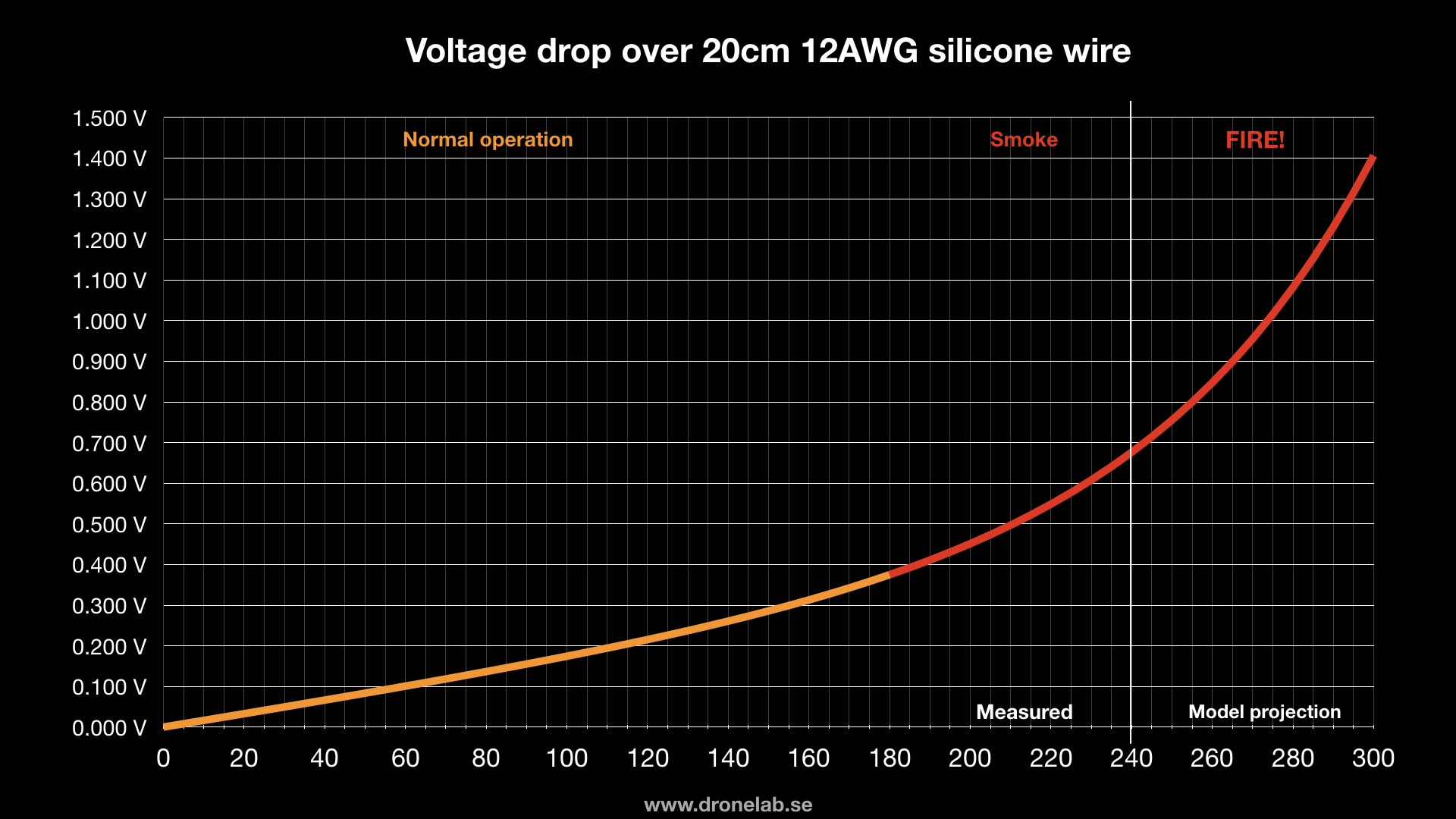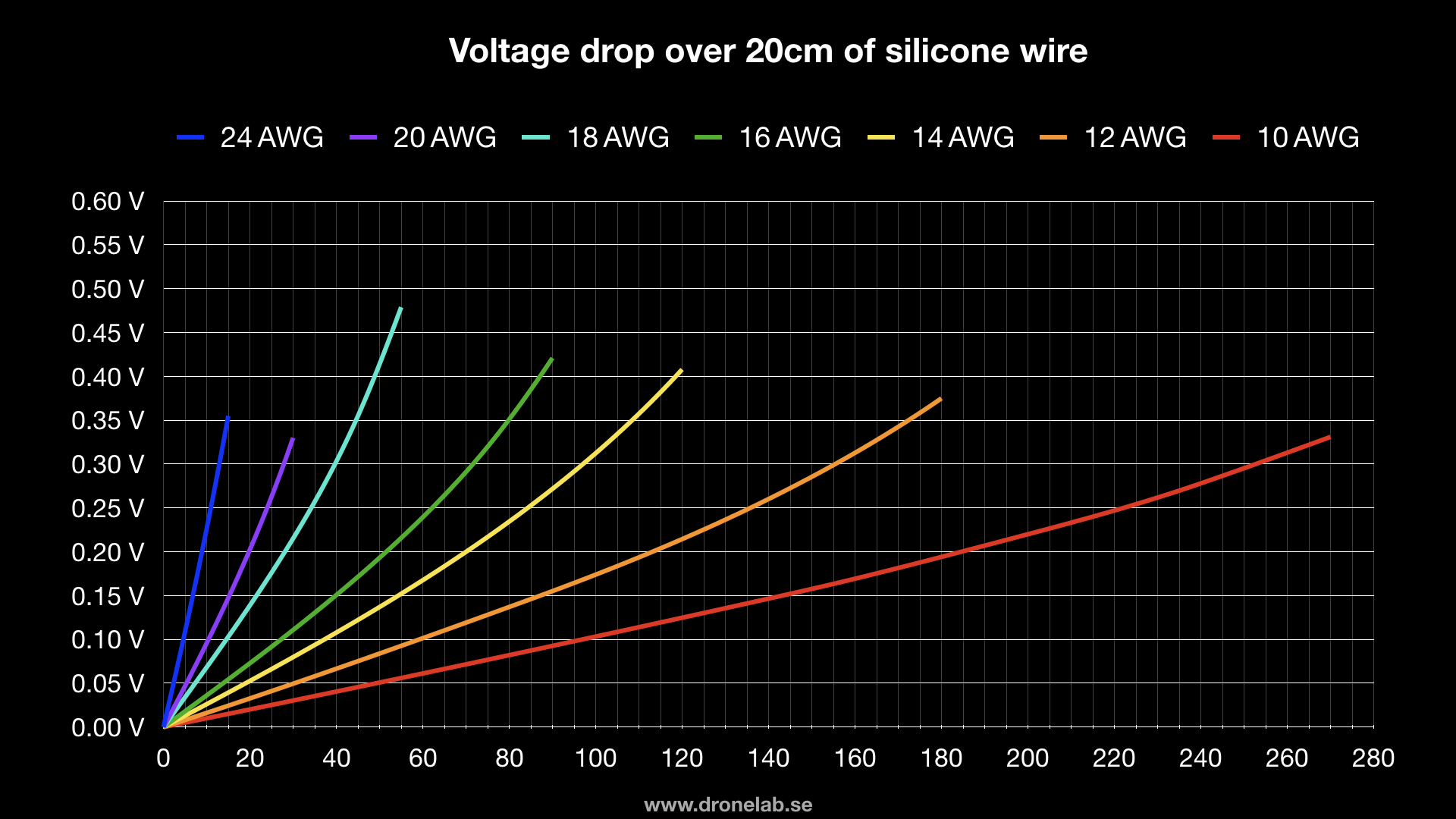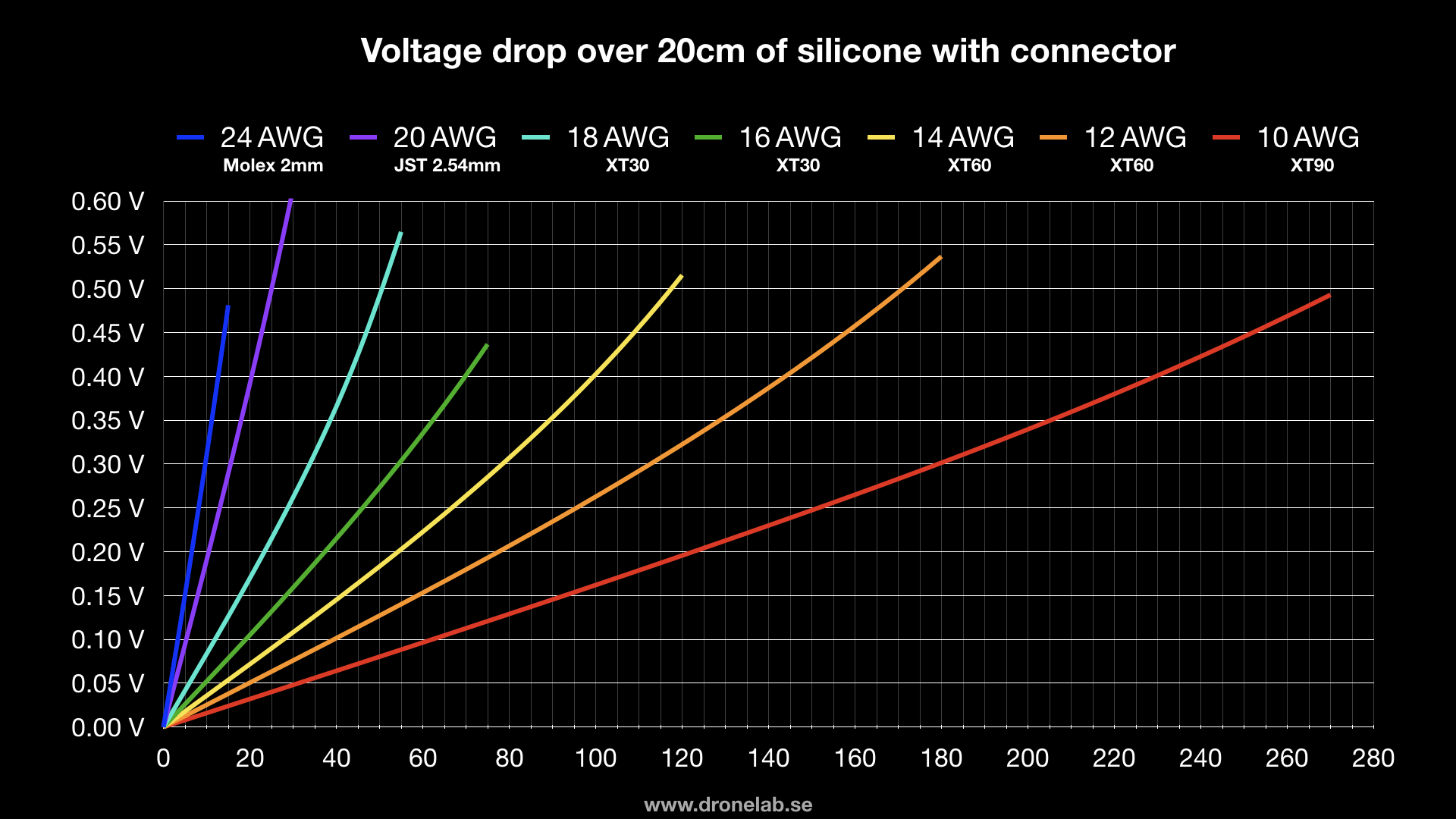We at dronelab highly recommend using exclusively silicone wire for drones and other RC craft. The high strand count and silicon insolation material guarantee excellent flexibility and resistance to vibration. Additionally, thanks to the high temperature tolerance of the silicon, soldering these wires is very easy. To choose the proper gauge (thickness) of wire, we performed the following wire current capacity tests.
Video
Maximum current

The most basic and important takeaway from these tests is how much current can each wire handle. This chart represents our somewhat conservative recommendations. The 10 second "punch" time we assumed is longer than what some pilots ever need, and this time plays an important role in the current capacity. Do not expect this relation to be proportional (half the time does NOT allow double the current!). We have not performed enough tests to comfortably give any recommendations for shorter loads, so for now we can only say that very short burst (1-2 seconds) can be 50% over the rating in the table.
We have noticed that the 18 AWG wire seemed to underperform, as the results for it stand out from the remaining wires. This is especially visible in the voltage drop charts below. All tests were performed multiple times, so it was not a measurement error. We believe that the wire we have was mis-manufactured - contains fewer wire strands than it should. This anomaly is within a reasonable tolerance (+/- 5%). We believe that the wire should have passed the 60A test, however we will not adjust our results to match our expectations. We might repeat this test if we purchase more 18 AWG wire from a different production batch and update the results here.
Voltage drop



These charts show the voltage drop over 20cm of wire (a 10cm battery lead with positive and negative wire) at a given current. This is part of the "sag" that is noticable when running at high current. The results for wires with connectors are simulated, based on our measurements of wire resistance and connector resistance.
Weight

The benefit of a thicker wire comes at the cost of a higher weight. For a small drone with 50A punch, it might be benefitial to have a 18AWG wire + XT30 connector over a 14AWG wire + XT60 connector. At 10cm of battery lead, this will only increase the sag by 0.1V, but will reduce the weight of the system by 8g (5g connector, 3g wires).

To close the loop, a "maximum recommended current per gram of wire per meter" chart was compiled. The flatness of this result suggests that all of our measurements were consistant. More copper means more weight, but also more current capacity. The results check out.
Resistance
For the sake of completness, we provide a measured resistance over 1 meter on a warm wire (approx 60-100C).
| 24 AWG | 20 AWG | 18 AWG | 16 AWG | 14 AWG | 12 AWG | 10 AWG |
|---|---|---|---|---|---|---|
| 87.0 mΩ/m | 40.0 mΩ/m | 28.3 mΩ/m | 15.3 mΩ/m | 11.2 mΩ/m | 6.80 mΩ/m | 4.12 mΩ/m |
Methodology
The wires were tested in a "burst" scenario, where the tested current was applied for 10 seconds. Prior to a "burst", a lower current was held, to keep the wire pre-warmed to approximately 30-50 degrees. A test would be considered failed, if any smoke was noticed, indicating heat damage to the insulation. All tested wires were the same length (17cm), and were connected directly to the terminals of the 600 Ampere power supply. Note that the voltage applied to the wire during the test has no significance to the experiment - the power a wire can carry is only limited by the current capacity, and - in practice - independent from the voltage.
The tests were performed on a chilly Swedish afternoon with an ambient temperature of just 5 degrees C, but this should not influence the results too much, as the point of failure of the wires is well beyond 200C, and each tested wire was pre-heated before the 10 second punch. Most of the wires were purchased at Hobbyking, and were initially inspected for build quality - we confirmed the high strand count, and confirmed that the insulation material was indeed silicone, as it did not melt at 250 degrees. You should expect similar results from wires purchased at similarly reputable vendors.
Signal wires
For all the connections that don’t carry motor current - like the power and signal to a camera, receiver or VTX, we also recommend silicone wire due to its resistance to vibration and ease of soldering. Although we omitted it in the video, a tiny 30AWG wire was tested to handle 5A of continuous current and a resistance of 400mΩ/m. However, that gauge is so slim, that for additional mechanical robustness we would recommend AWG28 or even AWG26 for such connections.
Final note
We try our best to offer usable data and make your drone building experience easier. However, DRONELAB is a not for profit venture, that we run as an afternoon hobby. We take absolutely no responsibility for anything you find on this site or our youtube channel. Nonetheless, if you disagree with our recommendations or you found a mistake in our data, don't hesitate to contact us.
